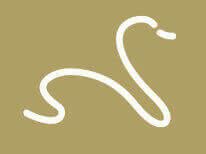Summary
All the pictures being assembled into a panorama must have the same exposure settings: ISO, exposure, aperture, and focal length.
Problem: Different Exposures Ruin Panoramas
This was the first and most obvious lesson I learned when capturing panoramas.
If the pictures are exposed differently, then the resulting panorama will look strange with some sections dark and some sections light. This will be especially obvious in the sky: pictures show different shades of blue or grey, making the picture particularly unnatural.
This picture of Cozumel is what your panorama will look like if you do not lock exposure.

Solutions
Solution 1: Lock Exposure
Your camera probably has a button or command labelled something like: AE-L/AF-L. This stands for Auto-Exposure Lock/Auto-Focus Lock. If you are shooting panoramas, change the function of this button so that it locks exposure but not focus: you want the pictures in one panorama to be at the same level of exposure, but a quick electronic re-focus on each image will help. Remember to lock the exposure at the start of each sequence of pictures.
Solution 2: Post-processing Software
Some stitching software is able to compensate for photos at different exposures.
This should be your last, desperate attempt to recover a panorama. It may and may not work; if it works, it will not work nearly as well as taking the pictures properly in the first place.
JPG or RAW
If you shot all your photos with the same exposure, but still have stripes in the sky, you are probably working with JPG images. You need to work with RAW images to solve this problem. Click here to read about this.
